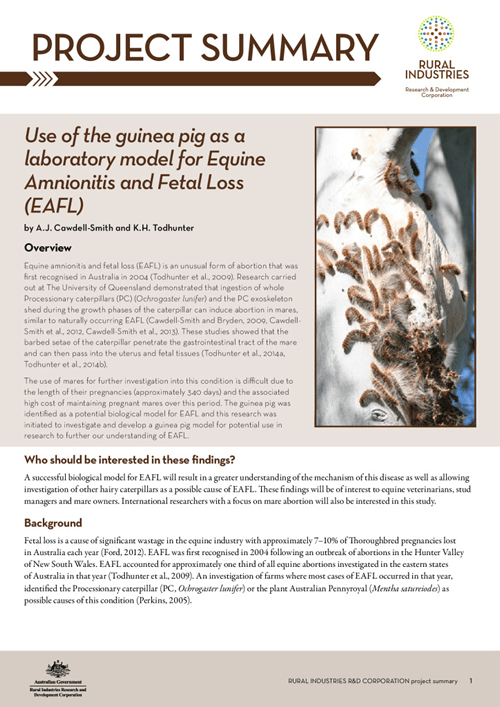Equine amnionitis and fetal loss (EAFL) is an unusual form of abortion that was first recognised in Australia in 2004 (Todhunter et al., 2009). Research carried out at The University of Queensland demonstrated that ingestion of whole Processionary caterpillars (PC) (Ochrogaster lunifer) and the PC exoskeleton shed during the growth phases of the caterpillar can induce abortion in mares, similar to naturally occurring EAFL (Cawdell-Smith and Bryden, 2009, Cawdell-Smith et al., 2012, Cawdell-Smith et al., 2013). These studies showed that the barbed setae of the caterpillar penetrate the gastrointestinal tract of the mare and can then pass into the uterus and fetal tissues (Todhunter et al., 2014a, Todhunter et al., 2014b).
The use of mares for further investigation into this condition is difficult due to the length of their pregnancies (approximately 340 days) and the associated high cost of maintaining pregnant mares over this period. The guinea pig was identified as a potential biological model for EAFL and this research was initiated to investigate and develop a guinea pig model for potential use in research to further our understanding of EAFL.





